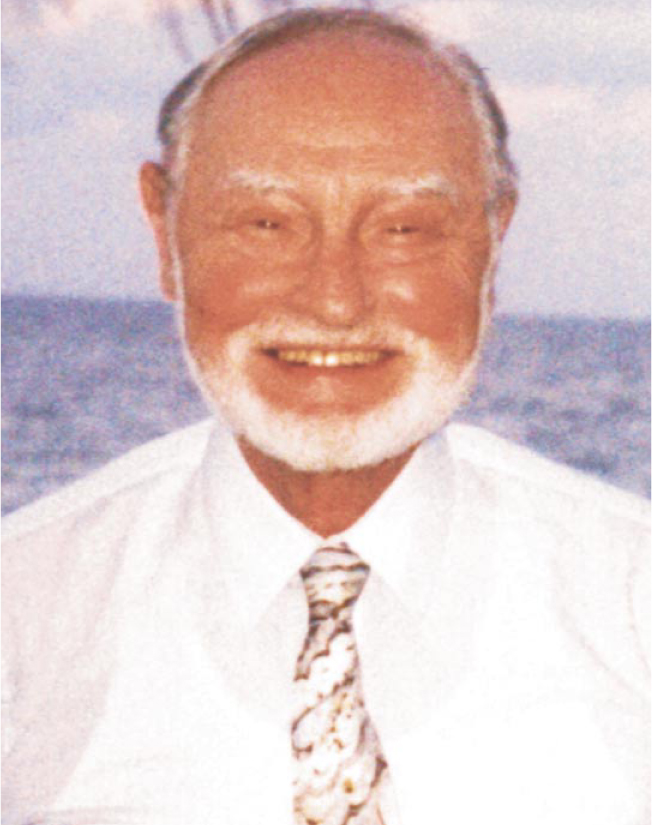Abraham Klein
DOI: 10.1063/1.1629015
Abraham Klein, a theoretical physicist and emeritus professor at the University of Pennsylvania and a leading figure in the community of nuclear theorists, died 19 January 2003 of complications from a stroke.
Born on 10 January 1927, Abe graduated from Brooklyn College of the City University of New York in 1947 with a BA in physics. His career started with his entrance to Harvard University, where he received an MA in physics in 1948. Under Julian Schwinger, Abe earned his PhD in just three years with a dissertation on the problem of one-meson exchange potential.
Abe stayed five more years at Harvard, first as an instructor and later as a junior fellow of the Society of Fellows, during which time he did research in field theory. At the beginning, still under Schwinger’s tutelage, he studied the higher-order corrections to the hyperfine structure and the Lamb shift in hydrogen. He also studied the fine structure of positronium. However, his most important contribution during that period was the reexamination—done solely by him—of the two-nucleon potential problem that Maurice Levy had worked out earlier. That contribution marked the beginning of Abe’s long-term interest in nuclear force.
Even though Abe had few direct interactions with Schwinger, Schwinger had a profound influence on Abe’s thinking. Throughout his career, Abe continued to make use of the techniques in field theory that Schwinger had developed.
In 1955, after turning down an assistant professorship offered by Harvard, Abe decided to accept a tenured position at Penn, where he remained until his retirement in 1994. That choice shaped his future career. Far away from Harvard with its stimulating environment, Abe had to find his own orientation. He did so by testing different subjects, from field theory to solid-state physics, and by touching on the many-body problem. By Abe’s own admission, the first six years at Penn were difficult. Aside from having to help with the care of his new house, he had to carry a heavy teaching load and guide half a dozen PhD candidates.
The first sabbatical that Abe took—in Paris—was salutary. He went to the Laboratory of Theoretical Physics and High Energies, chaired by Levy, at the Université de Paris—Sud. It was there that I first met Abe. That sabbatical year turned out to be a watershed of his future work.
Abe met a number of nuclear theorists at Orsay, including some on leave from the US. At the time, Abe was struggling with the question of the existence of deformed solutions (nuclei) described by rotationally invariant Hamiltonians. He was unaware of the existence of the Hill—Wheeler projection method, and in fact, his ignorance on the subject, together with his interaction with the colleagues he had just met, led him to develop a formalism now known as the Kerman—Klein formalism. Abe considered that his most important contribution to theoretical physics. The formalism involves both the equation of motion method and the spectral decomposition of operator products. Essentially, the method allows the restoration of the broken symmetry. It has been applied with success to quite diverse physical problems, notably to the study of nuclear collective motions, which was its first motivation, and to the plasma oscillation and solitons in field theory.
Another subject to which Abe devoted considerable time and effort was boson mapping of Lie algebras. Originally, boson mapping was designed for studying the anharmonicity of nuclear vibrations, but the formalism that has been developed was general enough to be applicable to other physical problems.
In the last two decades of his life, Abe worked in collaboration with Aurel Bulgac, Niels R. Walet, and me on developing a theory for the large-amplitude collective motions of systems with many degrees of freedom. His aim initially was to study nuclear motions, such as nuclear fission, but the formalism he developed, based on classical mechanics and subsequent quantization, was quite general. He successfully applied the formalism to the cases of a few degrees of freedom and to a model of chemical reactions. However, he still explored its implementation in nuclear studies; that was his original motivation and his most difficult task.
Although Abe was a leading figure in the community of nuclear theorists, nuclear theory was not the only subject on which he focused. Even after his sabbatical year at Orsay and his decision to plunge into nuclear physics, Abe continued to return periodically to field theory and related problems. His published papers in that area did not bring him the fame he obtained with nuclear theory. He truly enjoyed doing physics, which gave him, as he used to say, “real pleasure.”
Abe was a devoted husband, father, and grandfather. He and his wife Murielle shared interests in cultural events, particularly theater, and in reading. Abe liked sports. At Brooklyn College, he had been captain of a very successful wrestling team. Later, he enjoyed playing tennis and jogging.
Abe was a bon vivant. He liked good food, enjoyed good companions, and treasured friendships. Among his closest friends were collaborators and former students. Those of us in the physics community miss this gentleman. I consider myself lucky to have had him as a teacher and lifelong friend.


More about the Authors
Giu Do Dang. Université de Paris–Sud, Orsay, France .
